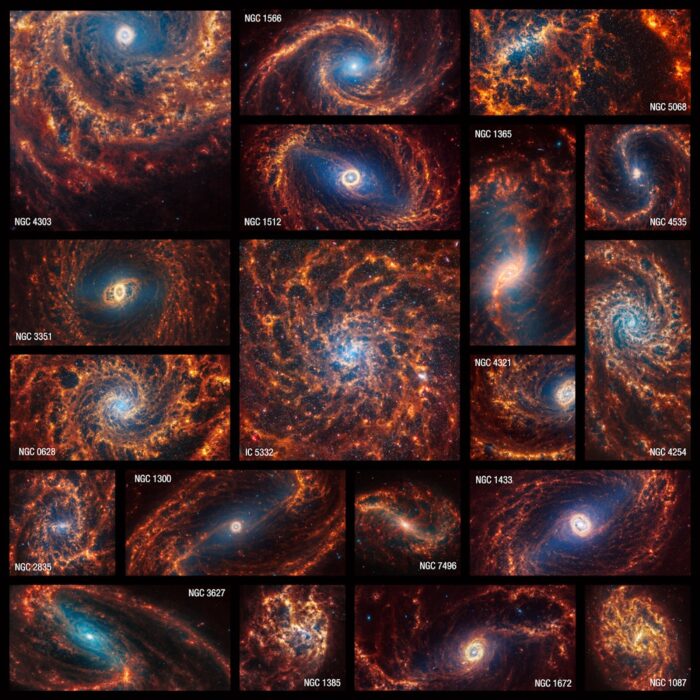The revealed images of spiral galaxies from the JWST are nothing short of captivating. They display stunning details of 19 spirals imaged face-on, highlighting the galactic arms with countless stars lighting up in infrared light along with the dense galactic cores hosting supermassive black holes. The images were captured as part of the long-standing Physics at High Angular resolution in Nearby GalaxieS (PHANGS) program, aimed at understanding the interaction of gas and star formation with galactic structure and evolution. The project is supported by over 150 astronomers globally and before the JWST images, it already held data from NASA’s Hubble Space Telescope, the Very Large Telescope’s Multi-Unit Spectroscopic Explorer, and the Atacama Large Millimeter/submillimeter Array in various light spectrums.
Janice Lee, Project Scientist at the Space Telescope Science Institute, emphasized the extraordinary nature of the JWST images, even for researchers who have spent decades studying these galaxies. The capability of the JWST to capture near-infrared (NIR) and mid-infrared (MIR) light enables a more detailed view than the Hubble Space Telescope, which operates in visible light, UV light, and a limited portion of infrared light.
NGC 4254 (Messier 99), a spiral galaxy approximately 50 million light-years away, exhibits a peculiar characteristic with one spiral arm appearing normal while the other is extended and less tightly wound. Although not classified as a starburst galaxy, it forms stars at a rate three times faster than similar galaxies, potentially triggered by an interaction with another galaxy around 280 million years ago.
Highlighted in the JWST high-resolution images, the red color represents gas and dust emitting infrared light, with some images displaying bright diffraction spikes in the galactic center, indicating an active supermassive black hole or a high concentration of stars. Another example, NGC 1365, a double-barred spiral galaxy about 74 million light-years away, exhibits a diffraction spike in the center, possibly caused by the active supermassive black hole or tightly grouped stars in the galactic center.
New images released alongside Hubble’s views of the same galaxies demonstrate how observing different wavelengths of light reveals or conceals various details in the galaxies. The PHANGS observing program utilizes different telescopes to observe galaxies in visible light, infrared light, UV light, and radio, translating the non-visible infrared light into different visible colors to create meaningful images.
Janice Lee, expressing her excitement about the new images, mentioned that they provide previously unseen detailed insights and convey a profound story about the star formation cycle. These spiral galaxies, similar to the Milky Way, have their massive arms defining them, with astronomers studying the arms for essential insights into galaxy formation, maintenance, and star formation termination. The JWST continues to provide a wealth of data for astronomers, including a catalog of approximately 100,000 star clusters, with vast potential for research and analysis, supporting the broader scientific community.











:max_bytes(150000):strip_icc()/GMEChart-7286536908ce4d7094c18b59292074f2.gif)



